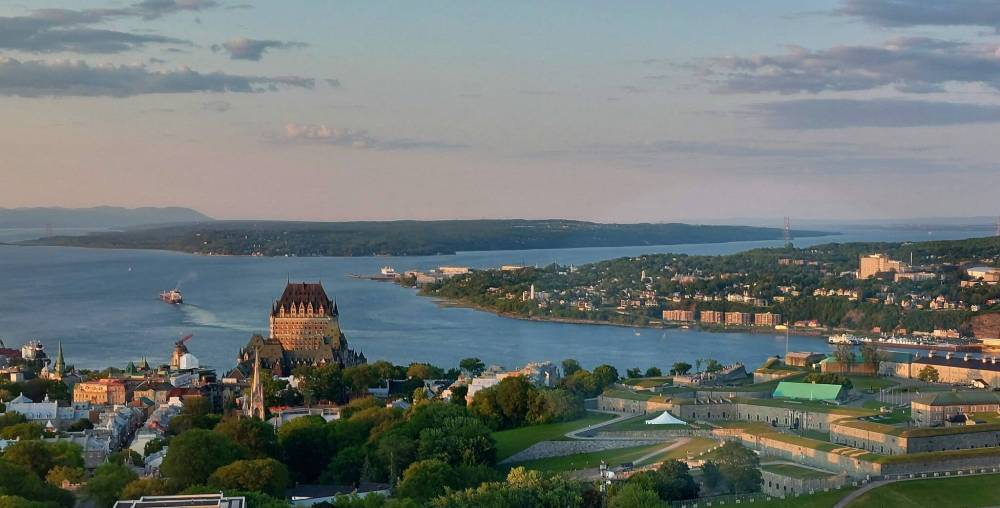The unquestionable charisma of Quebec City
Advertisement
Ville de Quebec, known in English as Quebec City, exudes an unquestionable charisma influenced by its people, culture, history, and geography. Situated along the St. Lawrence River, it’s where Samuel de Champlain arrived in 1608 and started one of the first permanent European settlements in what would become Canada.
The strategic position served as a trading post and military stronghold, enabling France to control the river route and establish a foothold. Prior to colonization, the region was First Nations territory. The St. Lawrence Iroquois had fortified villages along the river, waters for fishing, lands for hunting and farming, and trading networks that had long been in place.
The city still harkens back to early days of French settlement, with centuries-old fortifications, cobblestone roadways, and architecture as old as 350 years. Among the oldest surviving structures are Maison Jacquet (1675), Maison Chevalier (1680s), and Notre-Dame-des-Victoires Church (1688), made from sturdy stone construction that has literally withstood the test of time.
The interplay of past and present creates a harmony here, exuding a je ne sais quoi that is magical, and a connection to history that is tangible. Old Quebec, or Vieux-Quebec en français, is a UNESCO World Heritage site and heart of the city. Consisting of an Upper Town (Haute-Ville) and Lower Town (Basse-Ville), it allows visitors a glimpse of life in the 17th Century, in a setting steeped with the essence of old-world charm.
The Petit Champlain district — far below the near-vertical cliff on which Quebec City lies — is one of North America’s oldest commercial streets. Today, it’s adorned with decorative ironwork and colorful façades of wood-shuttered artisan shops, boutiques, galleries, and cafés, all nestled within narrow cobbled streets. It feels like a postcard come to life, with photo-worthy moments around every corner.
The Old Port waterfront area is a lively contrast to the upper city’s stately elegance. It connects Petit Champlain to Place Royale — considered the birthplace of French civilization in Canada. It’s here the foundations were laid for early colonial life, commercial activity, and governance. It’s not hard to imagine the centuries of traders, merchants, soldiers, and travelers passing through this space, and the First Peoples long before that.
Dominating the modern skyline is the picturesque Château Frontenac and its adjacent Dufferin Terrace. Completed in 1893 for the Canadian Pacific Railway, the luxury hotel was intended to attract wealthy travelers. Constructed in French château-style, its steep roofs and turrets have become an iconic Quebec City landmark that is impossible to miss.
The best way to see Quebec City is from Hotel Concorde. Merely steps from Vieux-Quebec, it’s also adjacent to the Plains of Abraham — an expansive green space where historic battles once unfolded. Now, its home to walkers, joggers, cyclists, sunbathers, and sports enthusiasts.

Photo by RoseAnna Schick
Ciel! Bistro-Bar on the 28th floor of the Hotel Concorde completes a full 360-degree revolution every 90 minutes. The slow moving rotation provides incredible panoramic views in an elegant dining setting.
Hotel Concorde has spacious rooms with large windows that span wall-to-wall. At the ends of the guest floor hallways are additional floor-to-ceiling windows with stunning sights no matter what direction they face. But the most expansive outlook has to be from the revolving restaurant atop the hotel.
Ciel! Bistro-Bar on the 28th floor completes a full 360-degree revolution every 90 minutes. The slow moving rotation provides incredible panoramic views in an elegant dining setting. With a locally-sourced menu of contemporary French-inspired cuisine and reinvented classics, and multiple choices of crafted cocktails, it makes for a unique and scenic dining experience indeed — giving Bon appétit a whole new meaning that you’ll never forget.

RoseAnna Schick
Travelations
RoseAnna Schick is an avid traveller and music lover who seeks inspiration wherever she goes. Email her at rascreative@yahoo.ca
Our newsroom depends on a growing audience of readers to power our journalism. If you are not a paid reader, please consider becoming a subscriber.
Our newsroom depends on its audience of readers to power our journalism. Thank you for your support.



